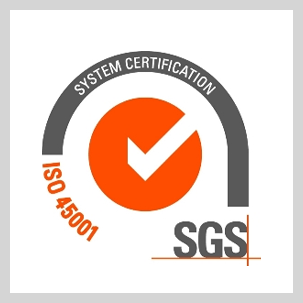
Certificates, CONFORMITY,
STANDARDS & SYMBOLS
New EN ISO 20345:2022 standard
Regulation (EU) 2016/425
Regulation (EU) 2016/425 of 03.09.2016 is the European law that regulates the market of personal protective equipment, defines and divides the responsibilities of the various economic operators.
The regulation provides:
– the determination of the validity period of a certificate: not exceeding 5 years
– the indication on the CE marking of the manufacturer’s postal address and the production batch number
– possibility of making the declaration of conformity also available on the aboutblu.com website, which can be downloaded from each product page
EN ISO 20345:2022 is the new regulation regarding safety footwear.
The new EN ISO 20345:2022 standard was published by CEN and in the Official Journal of the European Union on 11/05/2023. The standard defines the basic and additional (optional) requirements for safety footwear for general purposes. It includes, among others, mechanical risks, slip resistance, thermal risks and ergonomic behavior.
Starting from 11 November 2024, all safety shoes will be certified according to this standard, which will replace the previous EN ISO 20345:2011, but it will still be possible to place EN ISO 20345:2011 certified PPE on the market until the end of its validity (date of expiry) of the certificates issued by the notified bodies.
EU certificates (Regulation 2016/425) based on EN ISO 20345:2011 will remain valid even after the harmonization of the new EN ISO 20345:2022 as the new standard does not bring a significant increase in protection compared to the previous version.
Main features and innovations
of the new standard:
Protective Toe Cap: The legislation requires shoes with impact resistant toe cap, with an energy level of up to 200 J, to reduce the risk of injury due to falling heavy objects and resistant to compression, with a compression load of up to 15 kN.
Thermal Risks: Footwear is designed and manufactured to protect the feet from external damage in extreme thermal conditions: low and high.
Anti-static: Specific for the dissipation of static electricity, reducing the possibility of sparks in risky environments, for example in the presence of flammable substances and vapors.
Energy Absorption in the Heel: Footwear designed to absorb energy in the heel, offering additional protection against impacts.
Slip resistance: three different levels of protection are provided:
1. No slip resistance (Ø marking), for footwear designed for use in very special workplaces (soft terrain e.g. sand, mud, forestry environment, etc.).
2. Standard slip resistance (no marking, because it is included in the basic characteristics), for general use footwear.
3. Greater slip resistance (SR marking), for footwear with effective performance on more viscous contaminants such as oil.
Footwear suitable for ladders: footwear with resistance to fabric abrasion and whose dimensions are suitable for use on ladders.
Resistance to Penetration and Water Absorption: The footwear guarantees adequate waterproof properties of the materials used for the upper.
Puncture Resistance: three different types of anti-puncture inserts are available:
1. Metallic insert (P marking), less influenced by the shape of the piercing object (e.g. diameter, geometry, sharpness) but, due to shoe construction techniques, cannot cover the entire lower area of the foot.
2. Non-metallic insert (PL marking), lighter, more flexible and able to provide a greater coverage area of the lower foot area, but the resistance to puncture may vary more depending on the shape of the piercing object (e.g. diameter, geometry, sharpness).
3. Non-metallic insert (PS marking), like PL but may offer more adequate protection from smaller diameter objects.
Benefits of Compliance:
Personal Protection: Compliant footwear offers reliable protection, reducing the risk of foot injuries. Sleeping peacefully and protecting your staff is an essential value for every company.
Legal Compliance: Complying with EN ISO 20345:2022 helps companies meet legal standards on workplace safety. This will help you avoid costly fines or lawsuits.
Cost Reduction: Investing in compliant footwear prevents injuries, reducing costs associated with injuries and absences from work.







